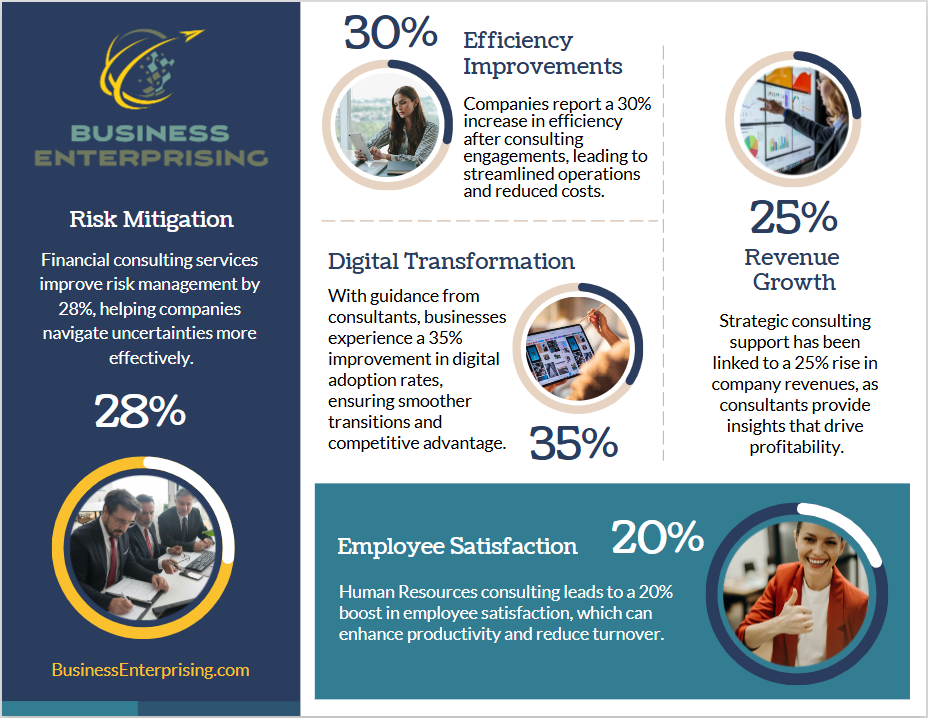
Additionally, targeting areas like pricing, customer retention, and operational efficiency can significantly impact your bottom line. Therefore, taking small, consistent steps to refine your strategies often leads to sustainable growth. Each improvement, no matter how small, strengthens your business and positions it for future success.
This guide provides actionable insights to help you maximize profits and streamline operations. With the right approach, you can build a stronger, more profitable business. Whether you’re focused on scaling or improving existing processes, these strategies offer valuable direction.
Streamline Operations to Reduce Costs
Streamlining operations is one of the most effective ways to reduce costs and increase profitability. According to Frank W. Buonanotte, a business consultant at Business Enterprising, inefficiencies often lurk in processes that are outdated or overly complex. Identifying these inefficiencies is the first step toward achieving smoother workflows and significant cost savings.
Automation plays a key role in cutting down repetitive tasks. When you automate mundane processes like data entry, payroll, or inventory management, you free up valuable time for more strategic work. Additionally, automation reduces the risk of human error, saving your company both time and money. Tools such as project management software or automated customer support platforms can drastically improve your team’s productivity.
Optimizing workflows requires you to analyze how tasks are currently completed and identify bottlenecks. For example, if approvals take too long or tasks are assigned inefficiently, adjust your processes to avoid delays. Regularly reviewing workflows allows you to identify opportunities for improvement, ensuring that resources are used effectively. Therefore, simplifying these processes can lead to faster outcomes and improved cost efficiency.
Implementing these strategies doesn’t need to be complicated, but it does require intentionality. When you follow these tips from a business consultant, like Buonanotte, you can reduce waste and allocate resources more effectively. As a result, you’ll create a foundation for sustainable growth and higher profits.
Enhance Pricing Strategies
Refining your pricing strategy can significantly increase your revenue. Frank Buonanotte, a seasoned business consultant, emphasizes that pricing should align with the value your products or services provide. Value-based pricing allows you to set prices according to the perceived benefits your customers receive. This method often leads to higher revenue, as customers are more willing to pay for value they clearly understand.
Another effective approach is using tiered pricing models. Offering multiple pricing options allows you to appeal to a wider range of customers. For instance, you can create a basic plan for budget-conscious buyers and premium packages for those seeking additional features. Therefore, this flexibility helps you capture different segments of your market while maximizing profitability.
Competitive analysis is equally important when revisiting your pricing strategy. By researching your competitors, you gain insight into what customers are willing to pay. Additionally, this analysis helps you identify gaps in the market where you can differentiate your offerings. Setting your prices slightly above competitors, while offering better service or features, can make your business more attractive.
When you apply these tips from a business consultant, you create a pricing strategy tailored to your market. By focusing on value, flexibility, and market trends, you can position your business for sustainable growth. As a result, your pricing becomes a tool not just for covering costs but for driving profits.
Leverage Technology for Cost Efficiency
Leveraging technology is an effective way to improve cost efficiency and streamline your operations. According to tips from a business consultant, implementing tools like customer relationship management (CRM) software can make a significant impact. CRM platforms help you manage client interactions, automate follow-ups, and track leads, saving time and reducing human error. By automating these processes, you allow your team to focus on higher-value tasks.
Enterprise resource planning (ERP) systems are another powerful tool for managing your business. ERP software integrates core processes such as inventory management, accounting, and project planning into a single system. This centralization reduces the risk of miscommunication and allows for more accurate decision-making. Additionally, ERP solutions improve scalability, helping your business adapt as it grows without adding unnecessary complexity.
Other technologies, such as cloud-based collaboration tools, further enhance efficiency. For example, platforms that enable real-time file sharing and project tracking reduce delays and improve team coordination. Therefore, adopting these tools not only lowers costs but also increases your team’s productivity. As technology evolves, regularly evaluating and upgrading your systems can help you stay competitive.
By implementing these strategies, you create a more efficient operation that supports long-term growth. Investing in tools like CRM, ERP, and collaboration software helps reduce wasted time and effort. With these tips, you can optimize resources and position your business for greater success.
Diversify Revenue Streams
Diversifying revenue streams is a reliable way to reduce risk and improve financial stability. By introducing new products or services, you can reach untapped customer segments. For instance, consider offering complementary services that align with your existing business. This approach not only broadens your revenue base but also strengthens your value proposition to customers.
Expanding into new markets is another effective strategy. If your business currently operates locally, explore opportunities in regional or international markets. Additionally, researching industry trends can help you identify emerging areas with high growth potential. Therefore, entering new markets can provide a steady income stream and mitigate the impact of fluctuating demand in your current market.
Bundling products or offering subscription-based models are also worth exploring. These approaches encourage repeat business and increase customer loyalty. Furthermore, testing these ideas on a small scale allows you to assess their success with minimal risk. According to tips from a business consultant, experimenting with diverse strategies helps you identify the best opportunities for your business.
By focusing on diversification, you position your company to adapt to changing market conditions. Introducing new offerings, entering new markets, or adjusting your sales model can protect your business from over-reliance on one revenue source. These strategies create a solid foundation for sustainable growth and long-term success.
Focus on Customer Retention
Focusing on customer retention is one of the most effective ways to drive repeat business and maintain consistent revenue. Retaining customers often costs less than acquiring new ones, making it a smart strategy for long-term growth. By offering loyalty programs, you provide an incentive for clients to continue working with you. For example, rewards like discounts, exclusive services, or early access to new products can strengthen their connection to your business.
Superior customer service is another critical component of retention. When you promptly address concerns or exceed expectations, clients are more likely to stay loyal. Additionally, regular communication helps you stay top-of-mind and shows that you value their business. Therefore, maintaining strong relationships ensures your clients feel appreciated and understood.
Implementing personalized solutions can further enhance customer satisfaction. According to tips from a business consultant, tailoring your services to meet individual client needs builds trust and fosters loyalty. Additionally, by regularly gathering feedback, you can identify areas for improvement and demonstrate your commitment to their success.
Investing in retention efforts not only improves your revenue but also enhances your reputation. Satisfied clients are more likely to recommend your business, leading to organic growth. By prioritizing these strategies, you create a loyal customer base that supports your business through every stage of its development.
Improve Employee Productivity
Improving employee productivity begins with creating a work environment that fosters growth and collaboration. Training programs are an effective way to build skills and increase engagement. When you invest in professional development, employees feel more equipped to perform their roles. Additionally, ongoing training allows your team to adapt to new technologies or changing industry demands.
Goal-setting is another strategy that drives performance. Clear and achievable goals provide employees with direction and motivation. Regularly reviewing progress helps maintain focus and ensures alignment with your company’s objectives. Therefore, setting measurable goals not only boosts productivity but also enhances accountability across your team.
Incentive systems can further encourage high performance. Offering rewards for meeting or exceeding targets creates a sense of accomplishment. For example, bonuses, extra time off, or public recognition can motivate employees to excel. According to tips from a business consultant, linking incentives to individual and team achievements fosters a culture of excellence.
When you implement these strategies, you create a more efficient and motivated workforce. By focusing on training, goal-setting, and incentives, you help your employees succeed. This leads to improved productivity and a stronger foundation for achieving your business goals.
Analyze and Optimize Marketing Efforts
To optimize your marketing efforts, measuring the return on investment (ROI) from your campaigns is essential. By tracking the performance of each channel, you can determine where to allocate resources most effectively. This process begins by establishing clear goals for each campaign, such as increasing sales or generating leads. Once you have these benchmarks, you can track conversions, customer engagement, and other key metrics.
Additionally, reallocating your marketing budget based on performance helps improve results. If one channel is performing exceptionally well, consider shifting more resources toward it. On the other hand, if certain channels are underperforming, reducing spend can free up money for more successful efforts. According to tips from a business consultant, using data to guide these decisions ensures you focus on what works.
Regularly reviewing your marketing data allows you to make adjustments in real-time. Therefore, this ongoing optimization process helps maximize your ROI while minimizing wasted spend. Additionally, investing in analytics tools can provide deeper insights into your audience’s behavior and preferences. This valuable data can help you refine your strategies and target the right customers more effectively.
By analyzing and optimizing your marketing campaigns, you can improve both performance and profitability. Regularly measuring ROI and reallocating your budget based on the results will drive better outcomes for your business.
Negotiate Better Vendor Contracts
Negotiating better vendor contracts is a practical way to reduce costs while maintaining the quality of your products or services. Start by reviewing your existing agreements and identifying areas where adjustments can be made. For example, assess pricing structures, delivery terms, and payment schedules. By understanding the specifics, you can approach vendors with clear requests.
Additionally, building strong relationships with your suppliers can improve your negotiating position. When vendors see the value of your business, they may offer more favorable terms. Therefore, focus on open communication and collaboration to reach a win-win agreement. According to tips from a business consultant, emphasizing your long-term partnership can help secure discounts or added benefits.
Comparing multiple suppliers is another effective strategy. If you find better terms elsewhere, use that information to negotiate with your current vendor. However, ensure you frame these discussions as an opportunity for mutual improvement rather than a threat. This approach keeps negotiations positive and productive.
Regularly reviewing and renegotiating contracts can lead to significant savings over time. By taking a strategic approach, you reduce expenses without sacrificing quality. These efforts help strengthen your bottom line while fostering lasting vendor relationships.
Monitor Financial Metrics and KPIs
Regularly monitoring your financial metrics and key performance indicators (KPIs) is essential to identify areas for improvement. Profit margins, overhead costs, and cash flow provide valuable insights into your business’s financial health. By reviewing these metrics consistently, you can spot trends and address potential issues before they escalate.
Additionally, tracking profit margins allows you to evaluate whether your pricing strategies and operational efficiency align with your financial goals. If margins begin to shrink, it may signal rising costs or inefficiencies. Therefore, adjusting your expenses or reassessing your pricing can help restore profitability. Tools like financial dashboards make it easier to monitor these metrics in real time.
Cash flow analysis is another critical aspect of financial monitoring. Positive cash flow ensures you have the resources to cover expenses and invest in growth. According to tips from a business consultant, reviewing your inflows and outflows regularly helps maintain a clear picture of your liquidity. Additionally, identifying periods of low cash flow allows you to plan ahead and avoid disruptions.
By focusing on financial metrics and KPIs, you can make informed decisions that strengthen your business. Regular reviews of your financial data not only improve efficiency but also support sustainable growth. With these practices, you create a solid foundation for achieving your long-term goals.
Invest in Scalable Growth Strategies
Investing in scalable growth strategies allows you to balance short-term profits with long-term stability. Expanding into new markets is one way to achieve sustainable growth. By diversifying your customer base, you reduce dependency on a single revenue source. Additionally, targeting underserved regions or industries can open new opportunities and drive steady revenue over time.
Enhancing your infrastructure is another effective approach. Upgrading technology or streamlining operations can support increased demand without overextending your resources. For example, investing in automation tools or expanding production capacity can help you scale efficiently. Therefore, these investments position your business for future growth while maintaining control over costs.
It’s important to balance these strategies with your current financial goals. According to tips from a business consultant like Frank Buonanotte, you should assess both risks and rewards before committing to long-term investments. Additionally, allocating a portion of your profits to growth initiatives ensures you can seize opportunities without jeopardizing daily operations.
By focusing on scalable growth strategies, you create a roadmap for sustainable success. Whether expanding into new markets or improving infrastructure, these actions prepare your business for future challenges. Over time, this balanced approach helps you achieve steady growth and lasting profitability.
Conclusion
In conclusion, growing your business requires careful planning and consistent action. Implementing strategies such as streamlining operations, diversifying revenue, and monitoring financial metrics creates opportunities for sustained success. Additionally, prioritizing customer retention and investing in scalable growth ensures you build a strong foundation for the future.
However, balancing short-term profits with long-term goals is essential to maintaining financial stability. According to tips from a business consultant, regularly reviewing your progress allows you to stay adaptable. Therefore, making data-driven decisions and focusing on what works can maximize both profitability and efficiency.
By applying these strategies, you position your business for growth and long-term success. With the right focus and adjustments, you can achieve measurable results while staying aligned with your goals. Each step you take strengthens your ability to compete and thrive.





